They say generals win their wars on maps, but sometimes the best stories are the ones written in salt water, jungle mud, and a stubborn promise. Let us follow General Douglas MacArthur.
When he left the Philippines in 1942 under Japanese siege, MacArthur swore, “I shall return.” It was not just bravado. Over the next two years, he fought his way back across the Pacific, moving through Australia, New Guinea, the Solomons, and the Marianas until he finally waded ashore at Leyte to keep his word. His path was a mix of desperation, strategy, and sheer spectacle, with battles that reshaped the course of the war.
So what would it look like to take that journey today? Not in uniform but as a traveler moving through islands of coral reefs, wartime ruins, and sunlit harbors. If I am going to dive headfirst into MacArthur’s story, someone should at least get a good vacation out of it. So pack your metaphorical helmet because we are retracing the road of a general who refused to surrender.
The Story
There are men who speak words that slip away like smoke, words lost in the rush of time. And then there are words that thunder through the years, words that hold fast like steel in the memory of nations. MacArthur’s promise was such a word. “I shall return.” Three syllables, each weighted with defeat, defiance, and destiny. He said them as he left the Philippines, forced out not in triumph but in retreat, carried across the sea like a man stripped bare of his kingdom. Behind him lay Bataan and Corregidor, soldiers starving in the jungle, prisoners stumbling into a march of death, and a people left to face the storm without their shield.
But history is strange, as full of shadows as of light. From the ash of that exile rose a campaign stitched together island by island, reef by reef, each one bought with blood and flame. In Brisbane, in rooms smelling of cigarette smoke and war maps, MacArthur drew his path back across the Pacific. At New Guinea, the jungles closed in with suffocating heat, the rivers ran with mud, and men clung to hillsides with hands more calloused than they ever thought possible. In the Solomons the sea boiled with fire, iron ships sank like stones into the black water, and the sky itself seemed to groan under the weight of airplanes screaming in combat. In the Marianas, the tide shifted for good, airstrips carved from coral and ash became the launchpads of a new world. And then, finally, Leyte—grey surf rolling in as MacArthur waded through, boots heavy, coat flaring in the wind, a man both victorious and haunted, a figure stepping into legend.
This is not just the story of one man’s return. It is the story of thousands who fought, starved, bled, and carried the promise with him. A journey across oceans and archipelagos, across heat and storm, through both despair and triumph. It is a story not of empire, but of endurance.
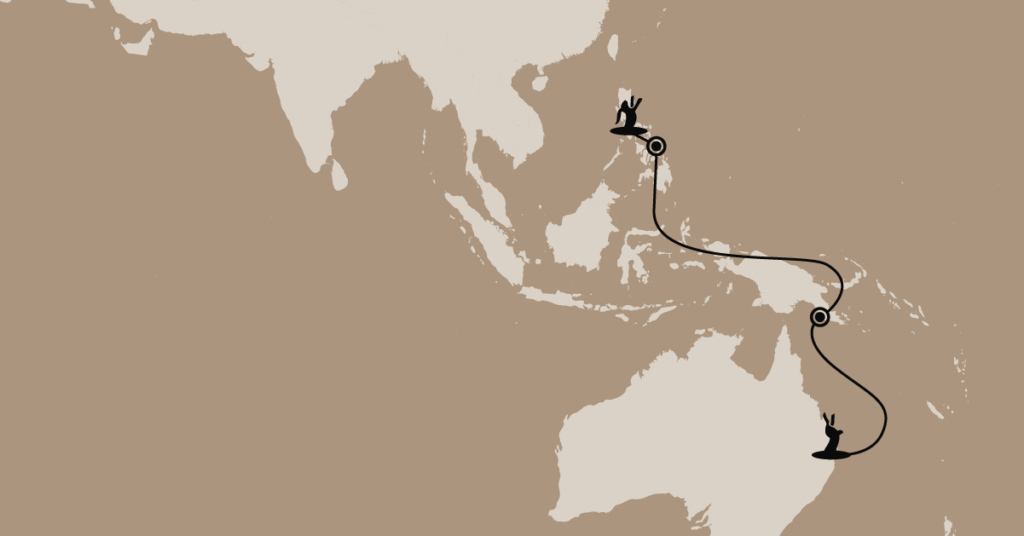
The Trip
This is not simply a path across islands and oceans, it is a journey across the echoes of a promise. Over two to three weeks, you will follow the route of MacArthur’s return, beginning in Australia, where strategy and determination took root in the war rooms of Brisbane. From there, the trail leads north into the jungles of New Guinea, where the heat presses down and the ghosts of soldiers still linger among the ridges and rivers. The voyage continues to the Solomon Islands, where coral seas and quiet beaches once rang with the thunder of battle. Then onward to the Marianas, those stepping stones of airfields and black volcanic sand, where the tide of the Pacific turned. And finally, the Philippines—Leyte and beyond—where MacArthur waded ashore and history itself seemed to draw breath.
The travel is straightforward with careful planning: major international flights bring you to Brisbane, regional flights carry you into Papua New Guinea, the Solomons, and the Marianas, and onward connections take you to the islands of the Philippines. Accommodations vary from modern city hotels to coastal resorts and guesthouses near quieter sites, with options ranging from modest $100-a-night stays to more luxurious retreats near $300. Along the way you will eat fresh seafood pulled from Pacific waters, tropical fruits that once sustained weary soldiers, and dishes seasoned with the cultural richness of every island you visit.
What emerges is not just a trip, but a pilgrimage across ocean and memory. Each stop opens not only to history but to beauty: jungles alive with birdsong, beaches lit by sunsets of impossible fire, and seas that hold both wreckage and wonder beneath their surface. To travel this road is to trace the outline of a promise kept, to step where words once became destiny, and to carry for a moment the weight of a story larger than any single life.
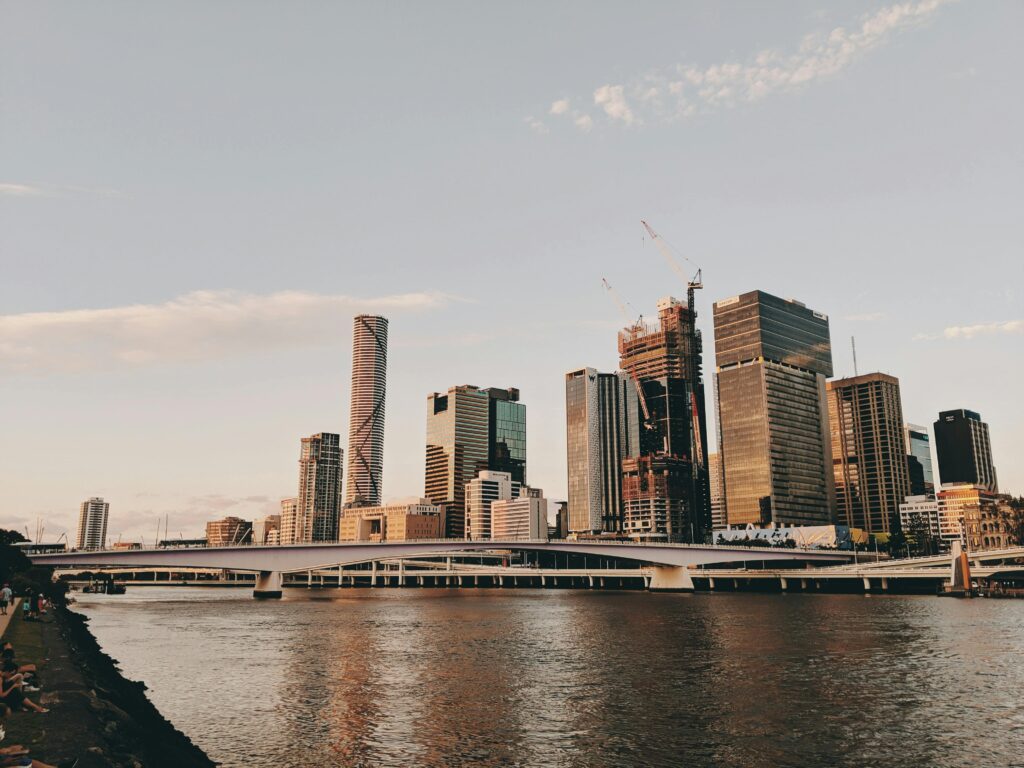
Photo by Valeriia Miller: https://www.pexels.com/photo/photo-of-buildings-near-river-2598750/
Brisbane – First Stop
When General MacArthur left Corregidor in 1942, it was here in Brisbane that he gathered his strength and forged the plan that would carry him back across the Pacific. The city became his headquarters, a place where strategy mixed with determination and the words “I shall return” grew into a mission that spanned oceans. Though the war has long ended, Brisbane still carries echoes of those days, tucked between its tropical river bends and modern skyline.
Fly into Brisbane Airport, a major international hub, and settle in for three nights. Hotels range from modest rooms around $100 a night to higher-end stays around $250. While here, visit the MacArthur Museum, housed in the building that once served as his wartime headquarters. Its preserved office and exhibits give you an intimate glimpse into how the Pacific campaign was shaped. Take a walking tour of the city to see wartime sites and enjoy the mix of colonial and modern architecture.
Between history, take time to enjoy Brisbane’s lively South Bank, with riverside dining, gardens, and art galleries. Meals can be as simple as grabbing fish and chips on the riverfront or indulging in Australian steaks paired with local wines. Brisbane today is a city of sun and ease, but its streets once carried the heavy weight of a world at war; making it the perfect opening chapter for your journey.
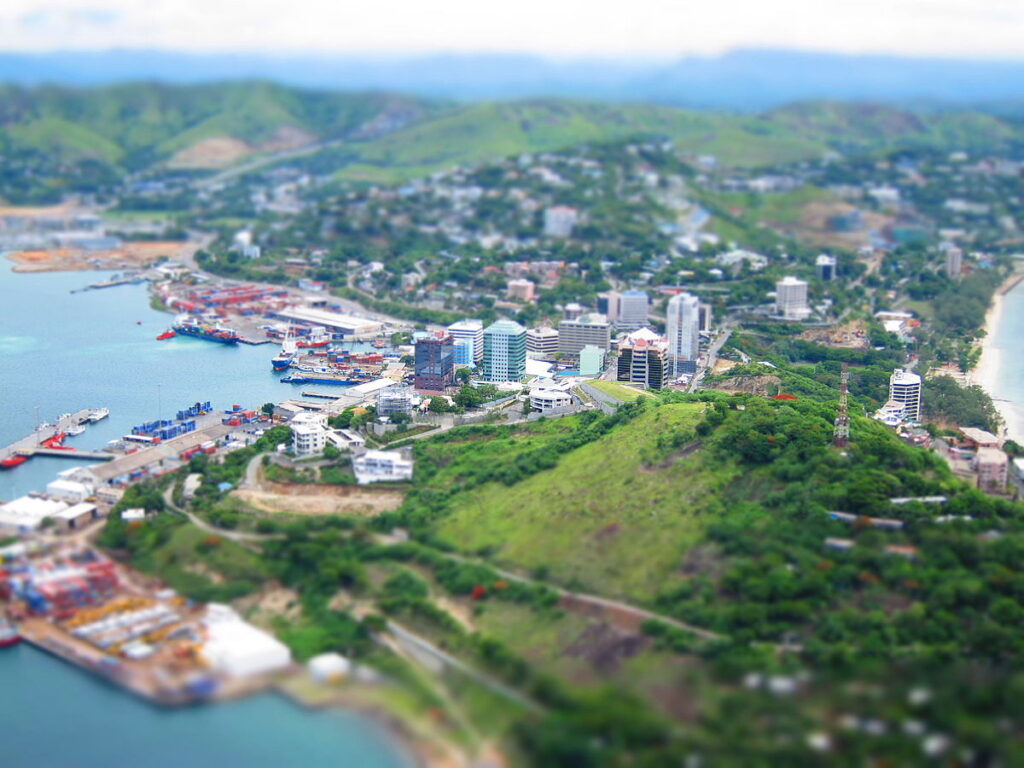
“Port Moresby” by ויקיג’אנקי licensed under CC BY-SA 4.0. [Link]
Port Moresby – Second Stop
If Brisbane was the mind of the campaign, New Guinea was the muscle. The fight for New Guinea was brutal; jungles that swallowed men whole, mountains that hid enemies in mist, and a coastline that became a chessboard of invasion and defense. MacArthur used Port Moresby as a key forward base, a place where supply lines converged and where his slow but steady push back toward the Philippines began.
Travelers today will find a very different Port Moresby, both rugged and vibrant. Fly from Brisbane in just under three hours, then settle in for two nights. Hotels here are practical, ranging between $120 and $250 per night, with many catering to business and government visitors.
Start with the National Museum and Art Gallery, where tribal artifacts and WWII relics share the story of the island’s layered past. Take a guided excursion to the Kokoda Track Memorial, a powerful reminder of the desperate fighting in 1942 when Australian and Papuan troops turned back Japanese forces in the jungles. If time allows, a day trip into Varirata National Park offers sweeping views over the bay and a sense of the wild, almost impenetrable landscape that once determined the fate of armies.
Dining in Port Moresby mixes international flavors with local seafood and tropical fruits. Try a simple market meal of grilled fish and taro, or sit down to more formal dining at a hotel restaurant where Australian influences mix with Pacific produce. Life here moves at a slower rhythm, but history still clings to the hills and coasts; reminding you that this was the first real step on the long road “back.”
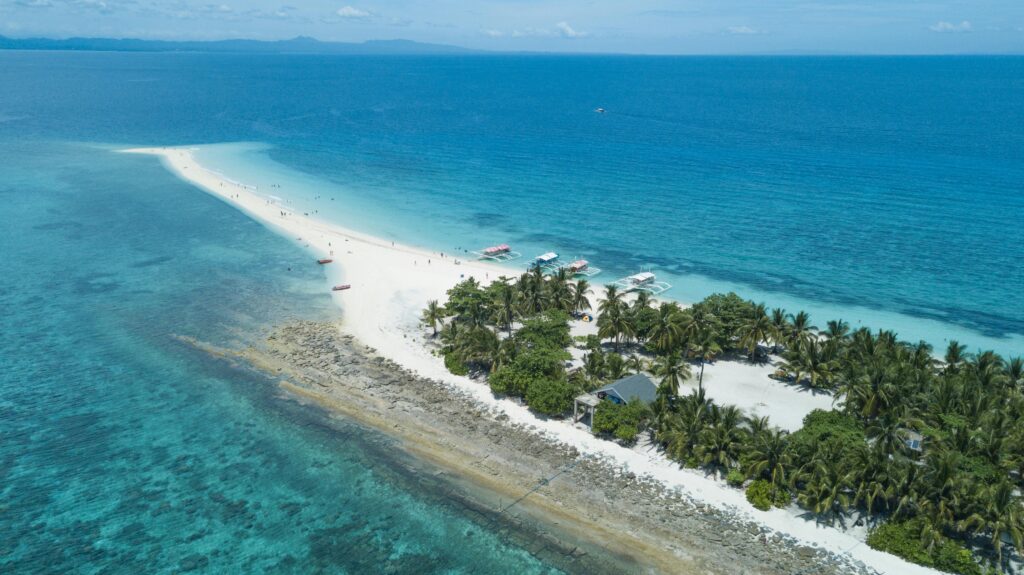
Photo by John Bryan Gray Agbagala: https://www.pexels.com/photo/drone-photography-of-the-famous-kalanggaman-island-beach-camping-ground-8031711/
Leyte – Third Stop
By October 1944, MacArthur’s long vow thundered into reality. The largest naval battle in history raged in the surrounding waters, while American and Filipino troops stormed the beaches of Leyte. Here, on Red Beach, MacArthur waded ashore with cameras rolling and declared, “I have returned.” It was not just a military maneuver but a promise fulfilled, and Leyte became the stage for liberation.
Reaching Leyte today is simple. From Port Moresby, most travelers connect through Manila before a short domestic flight to Tacloban City. Spend three nights here, giving yourself time to explore both the battlefield history and the quiet beauty of the island. Hotels in Tacloban are modest but comfortable, with prices ranging from $60 to $150 a night.
Begin at the MacArthur Landing Memorial National Park in Palo, where larger-than-life statues rise out of the water, recreating the moment of his return. Nearby, the Leyte Landing site itself offers a moving perspective as you stand where soldiers once fought their way ashore. Spend another day visiting Hill 522 and the battlefields of Palo and Ormoc, places where the cost of the campaign is written into the earth.
But Leyte is more than war. Visit Lake Danao, a guitar-shaped mountain lake surrounded by lush forests, for a moment of quiet after the history lessons. For food, savor fresh seafood at small family-run eateries or try kinilaw, the Filipino answer to ceviche, bright with vinegar and chili.
Here, in Leyte, you begin to feel the weight of MacArthur’s journey; not just a march of armies, but a story of return, redemption, and resilience.
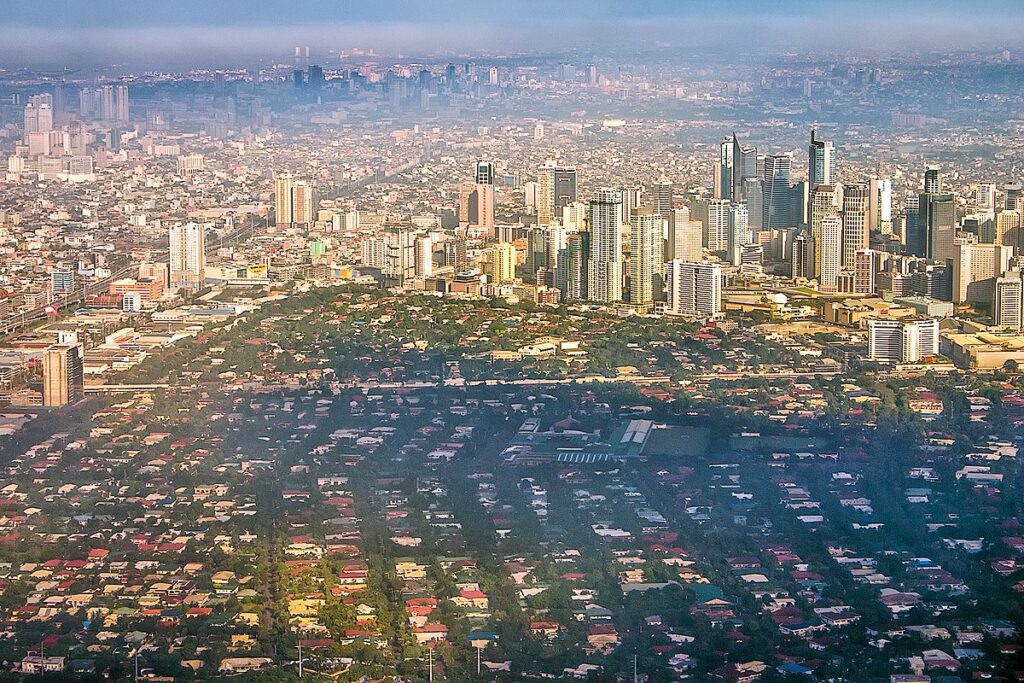
“Manila Aerial” by Nino Verde licensed under CC BY-SA 4.0. [Link]
Manila-Optional Stop
If Leyte was the return, Manila was the reckoning. By early 1945, the battle to liberate the Philippine capital was one of the fiercest urban struggles of the war. The city, once called the “Pearl of the Orient,” was left scarred by destruction, yet it was also the place where MacArthur reestablished the Philippine government, fulfilling his pledge in full.
Traveling here today is seamless. From Tacloban in Leyte, direct flights to Manila take just over an hour, making it an easy addition to the itinerary. Staying in the capital can be as simple or as luxurious as you like. High-rise hotels overlooking Manila Bay start around $120 a night, while boutique stays in Makati or Intramuros offer charm and history for closer to $80. Three nights in the city allow you to balance historical exploration with the energy of modern Manila.
Begin at Intramuros, the old walled city where Spanish colonial history meets the scars of the Second World War. Visit Fort Santiago, where soldiers and civilians alike endured imprisonment, and walk along the walls that once echoed with the sounds of battle. The Memorare Manila monument in Intramuros is a moving reminder of the lives lost in 1945.
For a broader view, head to the National Museum of Fine Arts or the Ayala Museum, which both trace Filipino resilience and culture across centuries. As the day closes, take in the sunset over Manila Bay, where the horizon glows with the same golden light MacArthur would have seen on his final return.
And of course, no visit is complete without the food. Try adobo, the national dish, in one of the city’s many restaurants, or enjoy halo-halo, a bright, icy dessert that brings relief from the tropical heat.
Ending here is more than a conclusion—it is a reflection. Manila reminds the traveler that promises fulfilled often come at great cost, and that history, no matter how violent, becomes part of the living fabric of a city.
To walk the path of MacArthur’s return is to follow more than a general’s footsteps—it is to trace a nation’s hope, its struggle, and its rebirth. From the calm shores of Australia, where the promise was spoken, to the beaches of Leyte, where it was kept, and finally into the streets of Manila, where freedom was reclaimed at an unimaginable cost, the journey is both a travel experience and a meditation on resolve. Over the span of two to three weeks, you move through islands and cities that hold not just history, but life; food sizzling in markets, children playing in plazas, waves breaking as they always have against the sand. What emerges is not only a vacation but a pilgrimage of memory, a reminder that some promises echo across oceans and generations, waiting to be kept.